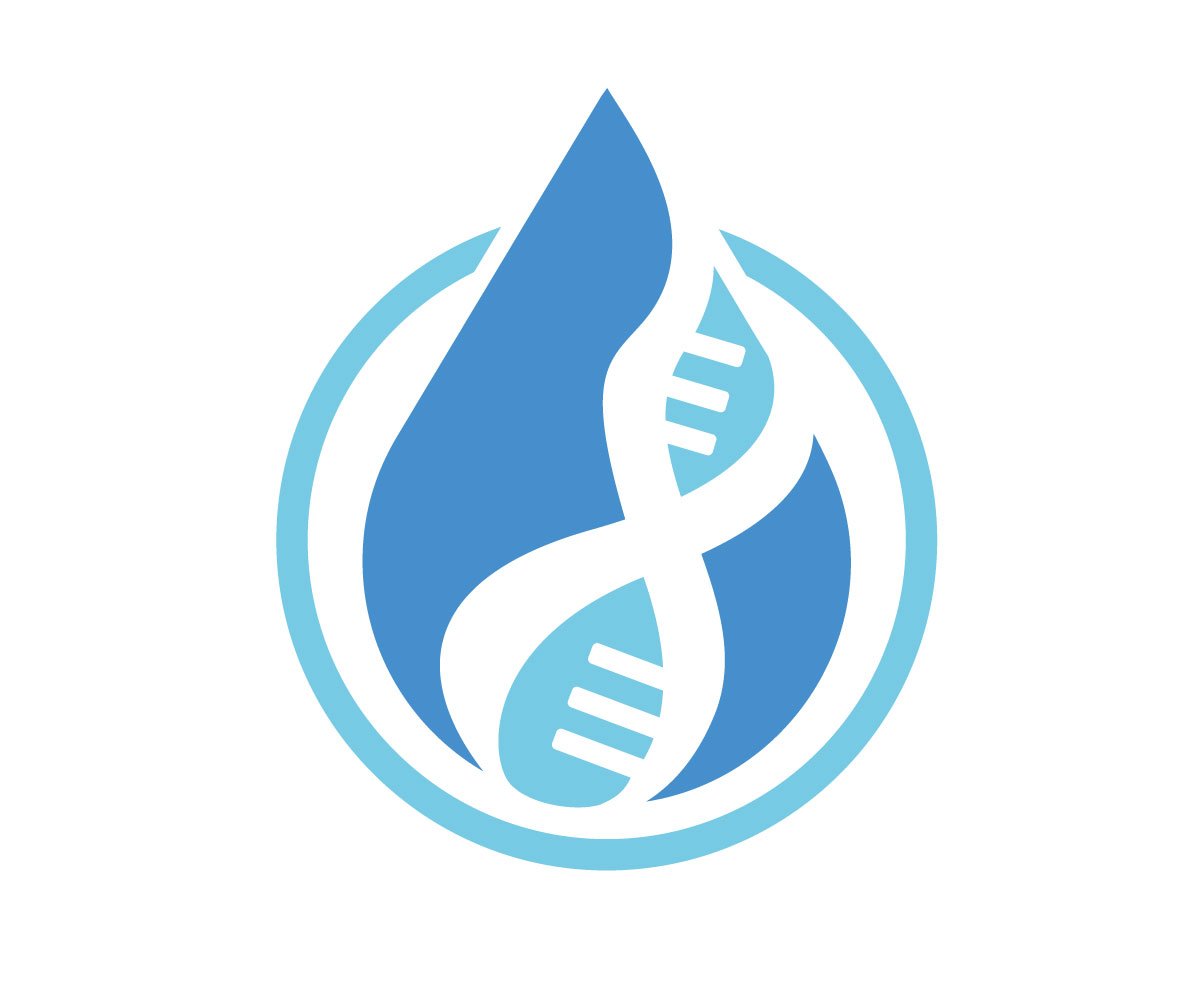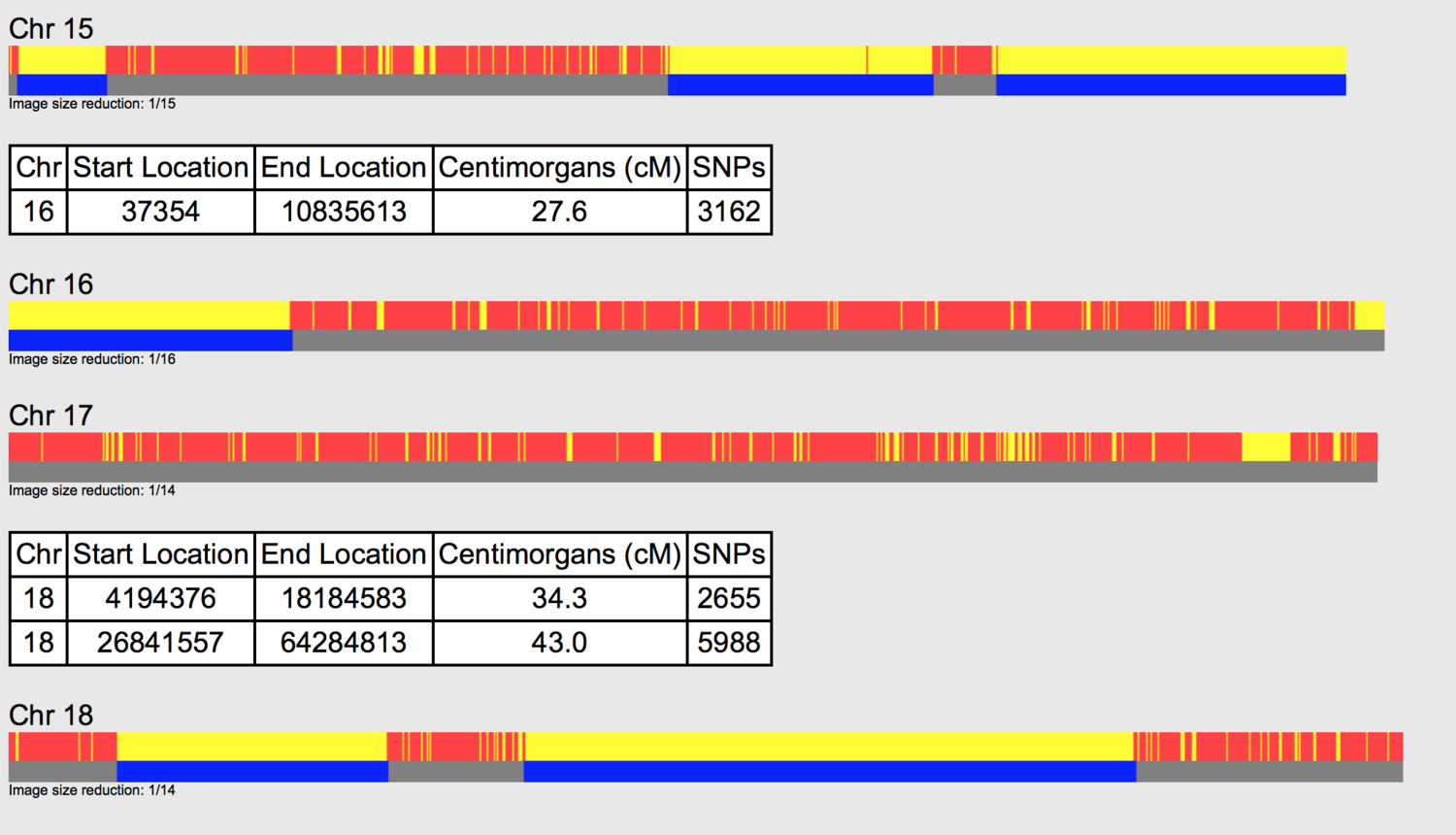GEDmatch & the Are Your Parents Related Tool: What It Means if You See a Lot of Blue
GEDmatch is a free website with tools that enable genealogists to use DNA and family trees to search for relatives. It has been in the news lately because it has recently been used to to identify criminal suspects. Tracing individuals based on their relatives DNA and family trees are only part of what GEDmatch allows DNA researchers to do. Other tools are available on GEDmatch, including one called "Are Your Parents Related?" (AYPR, for short).
AYPR plays an important role in genealogical searching: it helps identify endogamy, the practice of marrying and having children only with others in a small group due to the confines of customs, a common religion, or geographical location.
The AYPR tool looks at the DNA from one person, as opposed to comparing that person’s DNA against others in a list of matches. Looking within one DNA kit gives insight into the ancestry of that person. Specifically, it can tell us if the person's father and the person's mother were genetically related, and whether that relationship is relatively close or distant.
This is useful for genealogical purposes because it can often identify false leads before you follow them down the wrong trail. For example, if you discover you have endogamy in your family that you didn’t know about, you might save yourself a lot of time and prevent yourself from following a false lead down your maternal side when someone who matches you by DNA actually might be related to you on your paternal side.
We can see evidence of a person being from a small, tight-knit ethnic group using the AYPR tool. Examples of this would be Amish, Ashkenazi Jewish, and Polynesians. Evidence of endogamy shows up in GEDmatch AYPR as lots of thin yellow stripes interspered amongst the red down the length of most of the chromosomes.
This blog has focused on genealogical research of Hawaiians and shows how endogamy of Hawaiians can show up in a GEDmatch analysis.
When a long stretch of yellow occurs, the AYPR tool will assign blue regions to the image as well. Blue indicates that the stretch of yellow is significant in length.
Three out of the four chromosomes in this frame show regions of blue for this individual whose parents were first-degree relatives to each other (either brother/sister pairing, or parent/child).
So when you see blue appears across many chromosomes in multiple locations, it may not be indicating endogamy for your family. Lots of blue may be indicating a much closer genetic relationship between the mother and the father of the person whose DNA was tested.
At the bottom of the colored chromosome picture, you'll see more information. This includes a number called “total of segments >7 cM.” cM is short for centiMorgans, a relative measurement of DNA length. The generations number can also be suggestive. The lower the number, the closer the genetic relationship between the mother and father of the person whose DNA was tested.
This selection of numbers on a AYPR report that suggests the person’s parents were closely-related. The red circle focuses on the total cM count.
Here is an example, with the red circle around the number we focus on.
When we see numbers like "2.0” for generations to MRCA and a cM count close to 800, this is strong evidence that the person’s biological parents were first-degree relatives to each other. This blog post by Kitty Cooper helps explain how you can use a shorthand method of multiplying the cM number by four to help you figure out possible relationships that are indicated.
The three types of first-degree relative couples are brother/sister, mother/son, and father/daughter. These relationships share around 2600-3500 cM, close enough to fit within the range of share DNA indicated by the “times 4” rule.
In this example above, we see evidence of this person's parents being from the same family, but we can’t tell exactly what the relationship is. It was either first-degree relatives who were siblings, or it was a parent and child - most often a father/daughter pairing.
There is overlap between the AYPR results for children of parent/child and brother/sister couples, so it is not possible to tell which it is from DNA alone. However, Andrew Millard has created some simulations that shows differences between the averages for these relationships. Leah Larkin has written about the AYPR tool and Andrew Millard’s simulations in this blog post on TheDNAGeek.com.
Dr. Millard’s simulations can help with figuring out whether parent/child or brother/sister relationship is more likely to be the relationship but the simulations are just that — they try to predict, but they can’t say for sure.
How to figure out which one it is, then?
DNA is one piece of evidence used along with other types of evidence (stories, documents related to a birth, etc.) to make conclusions about genetic relationships between people. So if this happens to you and you have heard rumors or learned more information about your suspected parentage, you might be able to make a reasonable conclusion.
Another way is by doing more DNA testing. If the individuals who are your parents (or suspected parents) are still living and are willing to test, DNA testing on them would help add to the information. This could be done using traditional parentage testing (maternity or paternity testing) through a lab like DNA Diagnostics, or it can be done via the at-home route using an ancestry test.
A test on a suspected father would confirm whether he is father or brother to you, and a test on a suspected mother would confirm whether she is a mother or sister.
If you go this route, consider using pseudonyms or initials for individuals involved, to create a higher degree of privacy.
If parental testing is done through a consumer ancestry testing, only the parental sample is needed (since the child’s testing has already been done and used for the GEDmatch analysis).
If confirmatory parental testing is done through a paternity/maternity testing lab, a repeat sample on the child would be needed, as well as a parent or parents in question. That type of testing is court-admissible if certain steps are followed. Paternity and maternity testing gives a yes/no result rather than displaying the information about a match using colored chromosomes and a centiMorgan (cM) count.
If a suspected parent is no longer living, but you have a letter from them saved somewhere that might have their DNA on a licked stamp, an expensive and risky option would be to contact the company To The Letter and see if they can try to extract a DNA sample to convert into a file that can be used in GEDmatch. There’s no guarantee this approach will work, but it is one more avenue to consider.
From my work with individuals who learn that their parents are closely related, this discovery rocks the world of the person who makes it. It has affected individuals of all ages, ethnic backgrounds, and strata of society. This type of family secret was once able to be hidden but is now revealed more and more as consumer DNA testing becomes more widespread. If you discover this, you are certainly not alone.
I have connections to further support, so please reach out if you could use it.
Many people have been through a shocking discovery like this and are waiting and prepared to help others who find themselves on the same difficult journey as well.
-Brianne



